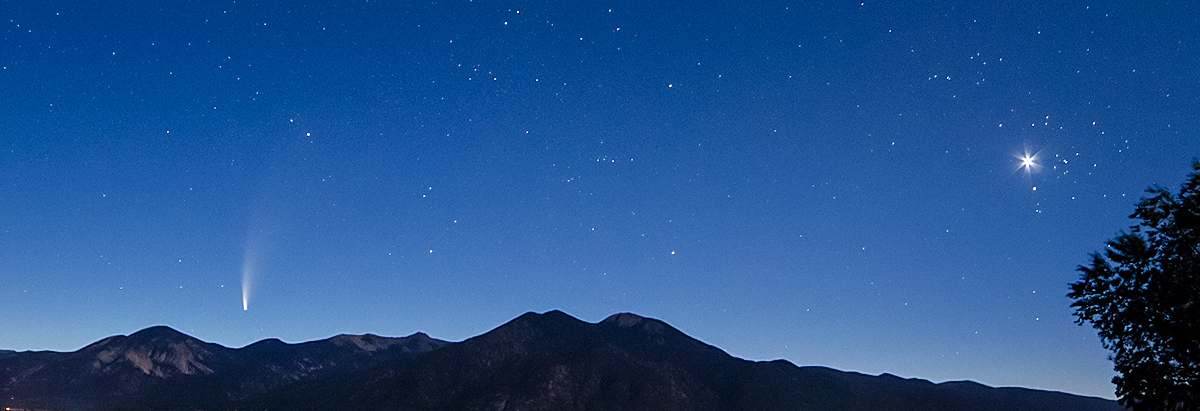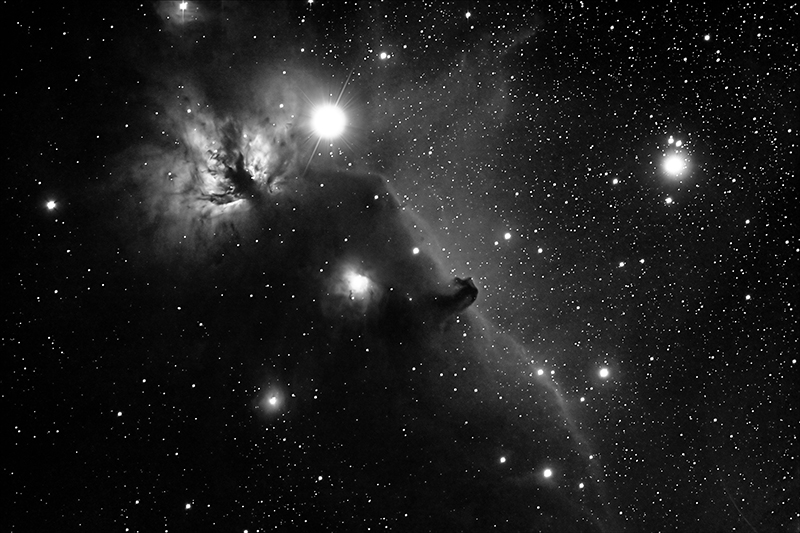
Welcome to taosastronomer.com!
offering
local "hands-on" observing
(visual and imaging) sessions and instruction
viewing and imaging from Rabbit Valley Observatory
a dark sky location on the mesa just west of Taos, NM
 |
Image obtained February 26-27, 2017 through RVO's Explore Scientific’s 127mm ES127ED APO refractor with Explore Scientific’s .7 reducer/flattener lens resulting in an f/5.25 optical system -- using a Baader-modified Canon XSi DSLR and BackyardEOS image-acquisition software – 23 of 26 carefully selected and stacked 240-second RGB frames combined with multiple dark, flat and bias calibration frames shot at ISO 800 and totaling more than 240 minutes (92 minutes effective luminance) were used to create this image; optics driven by the Losmandy G-11 mount equipped with Ovision's precision RA worm gear, guided with a ZWO ASI 120MM Monochrome CCD camera through a 60mm guidescope using PhD2 guiding software and post-processed with DeepSkyStacker, CCDStack2 (DDP and deconvolution) and Photoshop CS3 s/w. In this representation, the colors present in the original Canon camera-raw files were eliminated, thereby creating this monochromatic image.To view the new color version and learn about the optics used to capture this photograph, click here. The bright star Alnitak (Zeta Orionis, the easternmost star in Orion's belt) is at the center of one of the most remarkable and picturesque regions in the sky. The radiation of this hot star excites the gas in the surrounding nebulae and causes it to emit light. The nebula strip running south (to the right and down in the photo) from Alnitak is the designated IC 434, into which the famous dark nebula called the Horsehead Nebula (Barnard 33) protrudes from the eastern side. The dark nebula's shape resembles the head and neck of a horse, hence its name. Dark nebulae are clouds of dust in space that obscure stars and other objects behind them. NGC 2024 appears to be split into two parts. This nebula certainly has a flame-like appearance. The Flame Nebula and the Horsehead are approximately 1,500 light years from Earth, and they are part of the same huge complex of nebulae that glow in and around Orion. [information compiled from various internet sources]
[copyright Rabbit Valley Observatory/Willis Greiner, 2017 -- all rights reserved]
|
(all content copyright 2015-2019 Willis Greiner Photography, all rights reserved)